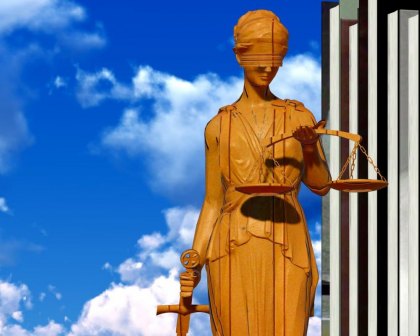5 different roads to the Supreme Court

In the wake of the 79-year-old Scalia’s death Feb. 13, most candidates mentioned to fill the vacancy are judges -- but that’s not a prerequisite.
The Constitution gives the president power to “nominate, and by and with the advice and consent of the Senate, shall appoint ambassadors, other public ministers and consuls, judges of the supreme court, and all other officers of the United States, whose appointments are not herein otherwise provided for, and which shall be established by law.”
But there no requirements concerning a nominee's background, as pointed out by the U.S. Supreme Court's website: "The Constitution does not specify qualifications for justices such as age, education, profession, or native-born citizenship. A justice does not have to be a lawyer or a law school graduate, but all justices have been trained in the law. Many of the 18th and 19th century justices studied law under a mentor because there were few law schools in the country."
The website adds that the last justice with no law degree was James F. Byrnes (1882-1972), who served on the court in 1941-1942. Byrnes taught himself law, the website explains. (See his biography on the U.S. Congress website.)
Here are five justices who took different career routes to the Supreme Court:
Salmon P. Chase (1808-1873): A secretary of the treasury under President Abraham Lincoln, Chase was a lawyer and abolitionist who had served as governor and senator of Ohio. He unsuccessfully sought the nomination for the presidency in 1856 and 1860. The politcally ambitious Chase did not always get along with Lincoln,but the president respected him and appointed him chief justice of the Supreme Court in 1864. Chase became the first Supreme Court justice to appoint an African-American attorney, John Rock, to argue a case before the high court. He served on the court until his death.
Charles Evans Hughes (1862-1848): Hughes was elected governor of New York in 1906. Previously, he had been an attorney fighting corruption. President William Howard Taft appointed Hughes associate justice to the Supreme Court in 1910. Hughes resigned to make a run for the presidency in 1916. He lost to the incumbent, Woodrow Wilson. Later, Hughes served as secretary of state under Presidents Warren Harding and Calvin Coolidge. In 1930, President Herbert Hoover nominated him as chief justice for the Supreme Court. He retired from the court in 1941.
Felix Frankfurter (1882-1965): He lived 82 busy years, and his biography presents a dizzying array of accomplishments. During World War I, Frankfurter served as a major and judge advocate (an officer of a military court martial). He was a legal adviser to President Woodrow Wilson at the Paris Peace Conference in 1919. He helped found the American Civil Liberties Union. Frankfurter advised Franklin D. Roosevelt -- first when FDR was governor of New York and later on New Deal legislation. In 1939, Roosevelt appointed him to the Supreme Court. Frankfurter retired from the court in 1962.
Earl Warren (1891-1974): Warren, who grew up in California, was determined to become a lawyer, recounts a biography on the Earl Warren College of the University of California, San Diego website. But he was only in private practice for the first three years after graduating from law school. Warren served in the military during World War I and afterward moved into public service. He was a district attorney and then governor of California. In 1948, he was an unsuccessful candidate for vice president on a ticket with Thomas Dewey, a Republican. In1953, President Dwight D. Eisenhower nominated him to become chief justice of the Supreme Court. He retired from the court in 1969.
Justice Elena Kagan (1960-): The 55-year-old Kagan has a long and impressive history in law. She clerked for U.S. Supreme Court Justice Thurgood Marshall in 1987, entered private practice and then taught law at the University of Chicago. After serving in the administration of President Bill Clinton, she was nominated to the U.S. Court of Appeals for the District of Columbia Circuit in 1999 but never received a hearing or vote from the Senate. (See records on the William J. Clinton Presidential Library website.) Later, she served as dean of Harvard’s law school and then as solicitor general of the United States.
Sources:
- Biographical Directory of the U.S. Congress: James Francis Byrnes.
- Earl Warren College of the University of California, San Diego: Biography of Earl Warren.
- Encyclopedia Britannica: Felix Frankfurter.
- Federal Judicial Center: Justice Felix Frankfurter.
- The Harvard Crimson: Felix Frankfurter dies; retired judge was 82.
- Ohio History Central: Salmon P. Chase.
- Public Broadcasting Service: Felix Frankfurter.
- United States Archives and Records Administration: U.S. Constitution.
- United States State Department: Charles Evans Hughes.
- United States Supreme Court: Biographies of current justices.
- United States Supreme Court: Frequently Asked Questions.
- United States Supreme Court: Justices timeline.
- William J. Clinton Presidential Library: Textual Research --Elena Kagan.
Related:
9 presidents and the fight over health care
If you would like to comment give us a shout or like us on Facebookand tell us what you think.

